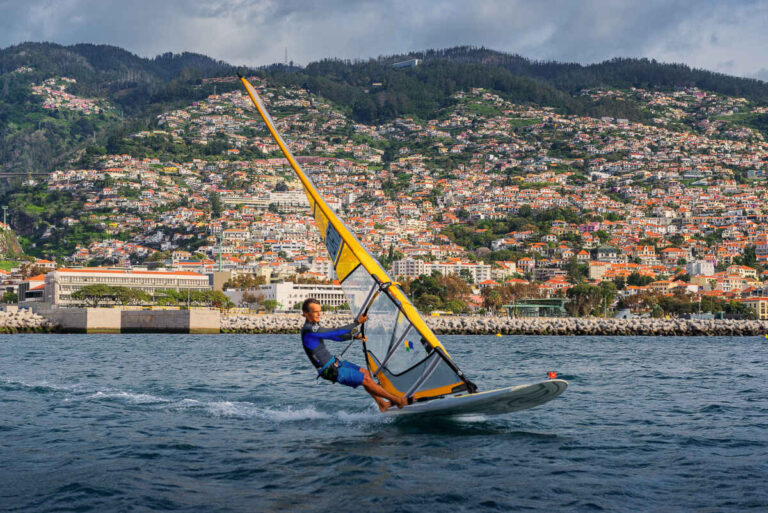
Just managed to escape the European covid-chaos and fly to Funchal yesterday. Halleluja! On the island of Madeira, officially, they have not registered a single covid-death yet. When you arrive at the airport without a brand new covid-test, you get tested at the airport, free of charge. I was tested yesterday at 15:40 local time. The (negative) test result arrived by email this morning at 08:39. At the end of September, they were even quicker: test made at around 16:00; result arrived at 23:20 the same day!
Everyone has his favorite places. Madeira is one of mine. The island is a Portuguese gem hidden in the Atlantic Ocean. The main island of the archipelago bearing the same name, Madeira, is just 57 km long and 22 km wide. It offers history, culture, landmarks, local food and Madeira Wine, the possibility of all kinds of sports activities, an excellent infrastructure with great hotels as well as a unique fauna and flora, including a UNESCO World Heritage Natural Site, the Laurissilva Forest.
Nearby are uninhabited, deserted and wild islands, therefore rightly called Desertas and Selvagens. On an organized excursion, you can discover there rare species of flora and fauna, including the monk seal (Monachus monachus), who has his last refuge there.
If you prefer to lie on a sandy beach in a nice hotel or resort, the island of Porto Santo is just 50 km from Madeira. In short, the archipelago of Madeira offers something for everyone.

The famous Funchal cable car. Photo copyright: Francisco Correio / Visit Madeira.
A short history of Madeira
The island of Madeira was already mentioned in the Libro del Conocscimento in 1350 and shown on 14th century Catalan and Italian maps. However, the archipelago was officially discovered only in 1419 and 1420 by João Gonçalves Zarco and Tristão Vaz Teixeira, two Portuguese navigators and explorers.
At its discovery, the island was overgrown with monumental trees and therefore christened “Madeira”, the Portuguese word for “wood”.
In 1433, the Portuguese Prince Henry the Navigator was given these islands of the Madeira Archipelago by his brother, King D. Duarte. The prince created a system of three captaincies, which were perpetual and hereditary.
Prince Henry the Navigator appointed João Gonçalves Zarco first captain of the western part of the island with Funchal, today’s capital of Madeira, as its center. His fellow explorer Tristão Vaz Teixeira received the eastern part of Madeira with the center at Machico. The neighboring island of Porto Santo was given to Bartolomeu Perestrelo, an Italian working for the Portuguese crown. One of his daughters, Filipa Moniz Perestrelo, married the Christopher Columbus, the one who “discovered” America for European eyes.
Madeira’s capital, Funchal, takes its name from the Portuguese word for fennel (funcho); the wild herb grew there abundantly at the time of the first settlers. In the first decades after the organization of the settlement into three captaincies in 1425, cereal production was the main factor of richness and development.
At the end of the 15th century, the island prospered thanks to the cultivation and export of sugar cane. Slaves were brought from Africa to produce the “white gold.” After the Madeiran Diogo Teives invented the first mechanical sugar mill moved by water, the sugar cane production increased massively and reached 3500 tones in 1506.
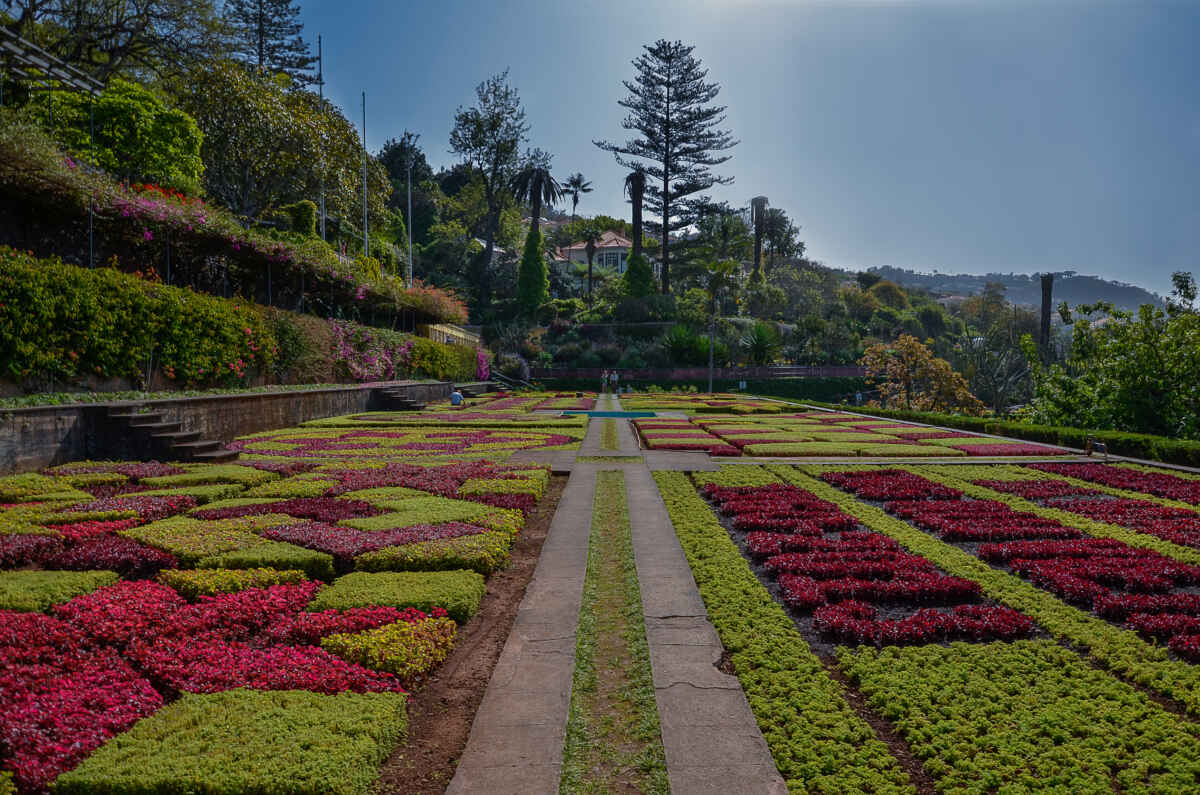
The Madeira Botanical Garden. Photo copyright Francisco Correia / Visit Madeira tourist agency.
The Museu de Arte Sacra in Funchal testifies to the wealth amassed in this period with its rich collection of paintings from Bruges, Antwerp and Mechelen. Architectonic masterpieces due to the sugar cane prosperity include Funchal Cathedral, the Church and Convent of Santa Clara, the Churches of Calheta, Santa Cruz and Machico, the Chapels of Reis Magos, Encarnaçâo and Corpo Santo.
In the last decade of the 16th century, sugar cane production suffered from poor soil, diseases and, above all, sugar imports from Brazil. French, but also English, Algerian and Moorish pirates attacked cities such as Porto Santo.
In 1508 Funchal was established as the island’s capital by Royal Decree. The city, located some 700 km off the coast of Africa, became an international port of call and a business hub.
With the Iberian Union n 1580, Madeira and Portugal came under the control of Castile. Only in 1640 the Duke of Braganza restored Portuguese independence. It was followed by the marriage of Infant Catarina de Bragança with King Charles II of England. Several contracts were granted to British people who started to export Madeira Wine to England, Occidental India and the American Colonies.
The so-called Vineyard Cycle had its reflection in arts and architecture. Baroque was now the style en vogue. For instance the streets of Rua dos Ferreiros, do Bispo and de Santa Maria, the Church of San Pedro and the Colégio in Funchal are testimonies of the Baroque period.
During the Napoleonic wars, the British occupied the Island of Madeira to protect British interests, to prevent a French invasion and to keep the port open. The first occupation started in 1801, the second in 1807 and lasted until the end of the war with France in 1814. The second occupation was led by General William Carr Beresford.
In 1808, the historic Quinta da Achada (today’s hotel Quinta Jardins do Lago) was the residence of General William Beresford (who became Viscount Beresford in 1823), the commander of the British Army in Portugal during the Napoleonic Wars in Portugal.
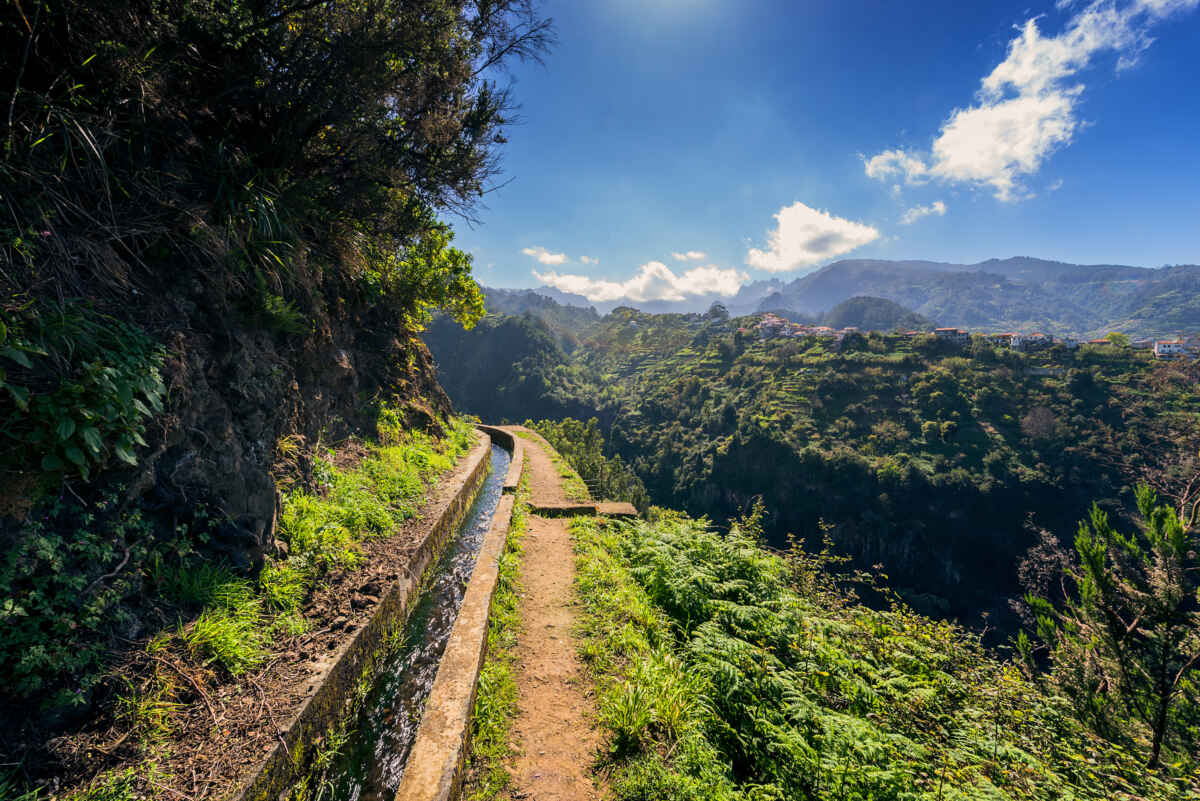
Levada do Castelejo. Photo copyright Francisco Correio / Visit Madeira official tourist office. Find books about Madeira at Amazon.com, Amazon.co.uk, Amazon.de.
Flora and fauna
The archipelago and the Island of Madeira are of volcanic origin. Therefore, many endemic species, flora and fauna, can be found in the area. Madeira is famous for its lush vegetation.
The endemic flora and fauna was enlarged by species from around the world brought here by navigators, botanists, simple citizens and visitors.
The UNESCO World Heritage Natural Site, the Laurissilva Forest, is considered a relic of the subtropical forest that existed in the Tertiary Period in Southern Europe and around the Mediterranean basin. It survived the last glaciations. Madeira has the world’s largest Laurissilva Forest, covering an area of some 22,000 hectares, mostly on the island’s northern coast. It is characterized by flat leaf shrubs and trees, liverworts, lichens, ferns, mosses and other smaller plants. Among the island’s endemic plants is the Madeira orchid, Dactylorhiza foliosa.
Most luxury hotels offer fabulous gardens. Maybe Quinta Jardins do Lago with its 2.5 hectares of green space with over 500 rare species of plants and trees impressed me most. Walking around is an illuminative experience since most important plants carry a green label with their botanic names.
At Quinta do Monte, as in other hotel gardens, you can find a combination of protected species of the indigenous forest of Madeira (Laurissilva), including Til, Loureiro, Vinhático, Barbusano and Urzes, as well as imported exotic trees and plants.
The natural fauna and flora reserve does not only spread around the island. The limpid waters of the Madeira archipelago are not only a great place for scuba diving and surfing, but they are first and foremost one giant nature reserve.
You can admire the underwater world in the Garajau Nature Reserve, set up in 1986. Among the species to observe are the moray eel (Muraena augusti), the sea bream (Diplodus cervinus), the dusky grouper (Epinephelus guaza) and the garden conger (Taenioconger longissimus).
As mentioned above, the Desertas and Selvagens are unique nature, where the monk seal (Monachus monachus) has his last refuge. They are important bird sanctuaries and were set up as Nature Reserves in 1990 respectively 1971. The Madeiran archipelago hosts some 42 breeding species, 3 of which are endemic. Therefore, bird watching has developed greatly in recent years. You can admire the Zino’s Petrel, the most threatened seabird of Europe, the Madeira Laurel Piegeon, the Madeira Firecrest, the Feae’s Petrel, the Plain Swift as well as the Canary, one of the most common birds on Madeira.
Sport fishing is another activity in the archipelago, but is of course limited to the non-protected species such as tuna, blue marlin and barracuda. In addition, you can admire over a dozen of dolphin and whale species, including Atlantic spotted dolphins, bottlenose dolphins, sperm whales, pilot whales and brydes whales, all of which of course do not end up on your plate.
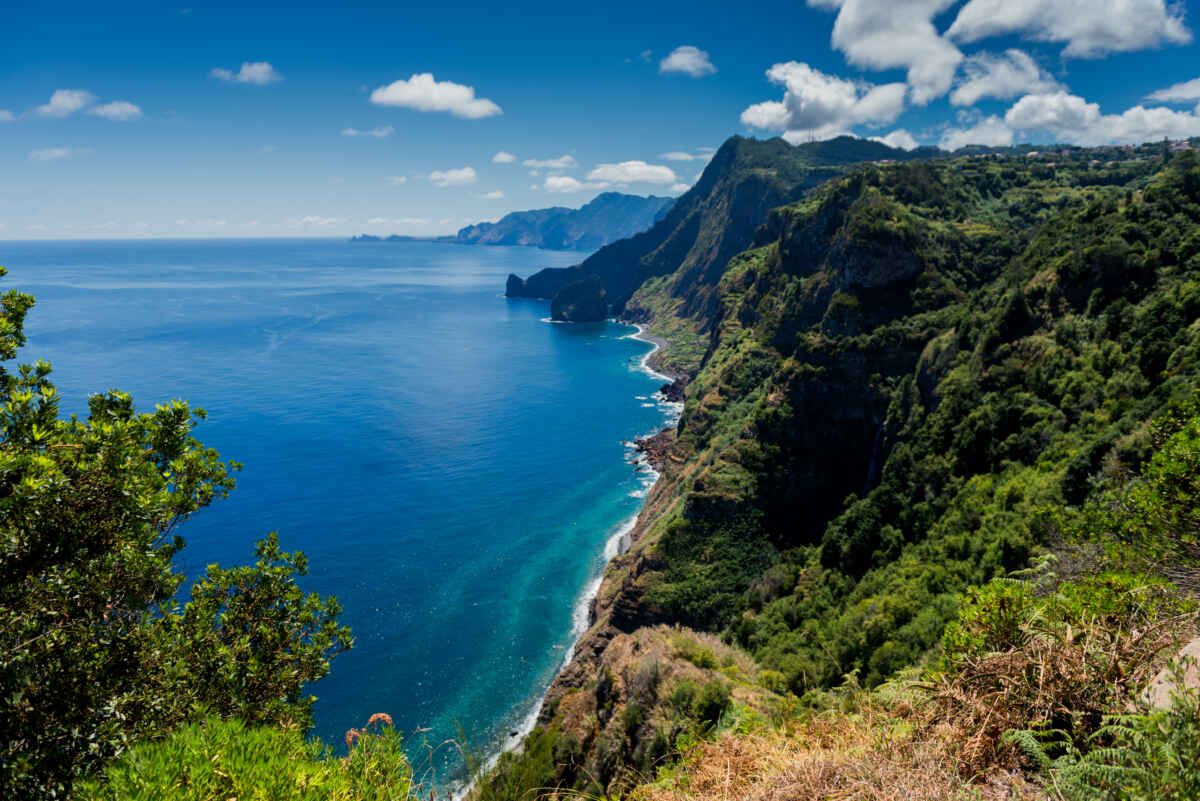
Santana on the island of Madeira. Photo copyright: Francisco Correia/Visit Madeira. The municipality of Santana, located on the north coast of Madeira island, has an area of 96.2 km2 inhabited by about 8,800 people. The name of this town is due to a primitive chapel dedicated to Santa ‘Ana, which gave rise to the present church. Because the municipality was inaccessible by sea and land, its inhabitants have preserved features that have not suffered outside influences. One example that comes from this isolation is the typical architectural style of their houses with thatched roofs known as “casinhas de Santana” (little houses of Santana).
Madeira Wine
The production of Madeira Wine began with the first settlers in the 15th century. Prince Henry the Navigator ordered the first grape varieties to be introduced. Historical records show that the island was already exporting wine just 25 years after its discovery in 1419.
In the 17th century, sugar cane plantations – which had been introduced from Sicily in 1456, depended on slave labor and fell victim to Brazilian competition at the end of the 16th century – were substituted by vineyards. From the 1750s onward, Madeira became famous for its fortified wines with a higher level of alcohol. Madeira Wines were served at banquets and tables in most European courts and colonies.
In 1663 a protectionist ban was introduced forbidding the exports of goods from Europe to the American colonies. An exception was made for British merchants based on the island of Madeira, which gave them a trade monopoly for direct trade with the thirteen colonies of the New World.
Madeira Wine was already praised by Shakespeare in his plays. The Independence of the United States on July 4, 1776 was celebrated with a toast made with Madeira Wine. George Washington, Thomas Jefferson and, in the 20th century, Winston Churchill were enchanted by Madeira Wine.
In 1815, on his way to exile on the island of St. Helena, Napoleon passed by Madeira onboard the HMS Northumberland. He was not allowed ashore, but the British Consul Henry Veicht dined with him and offered him some wine. At Napoleon’s death, the wine was untouched. Consul Veicht claimed them back and sold them to the Blandy’s wine merchant family. The bottled the wine in 1840. On his visit to Reid’s Hotel in the 1950, Winston Churchill was served one of those bottles.
In the 19th century, the vineyards of Madeira were completely devastated by two plagues: powdery mildew (Oidium tuckeri) in 1852 and louse vine, the root eating louse Phylloxera vastatrix, in 1872.
Among us, Madeira is not just about famous wines, but also about great cocktials. Read my article about the 2012 Madeira After Dinner Cocktail Competition.
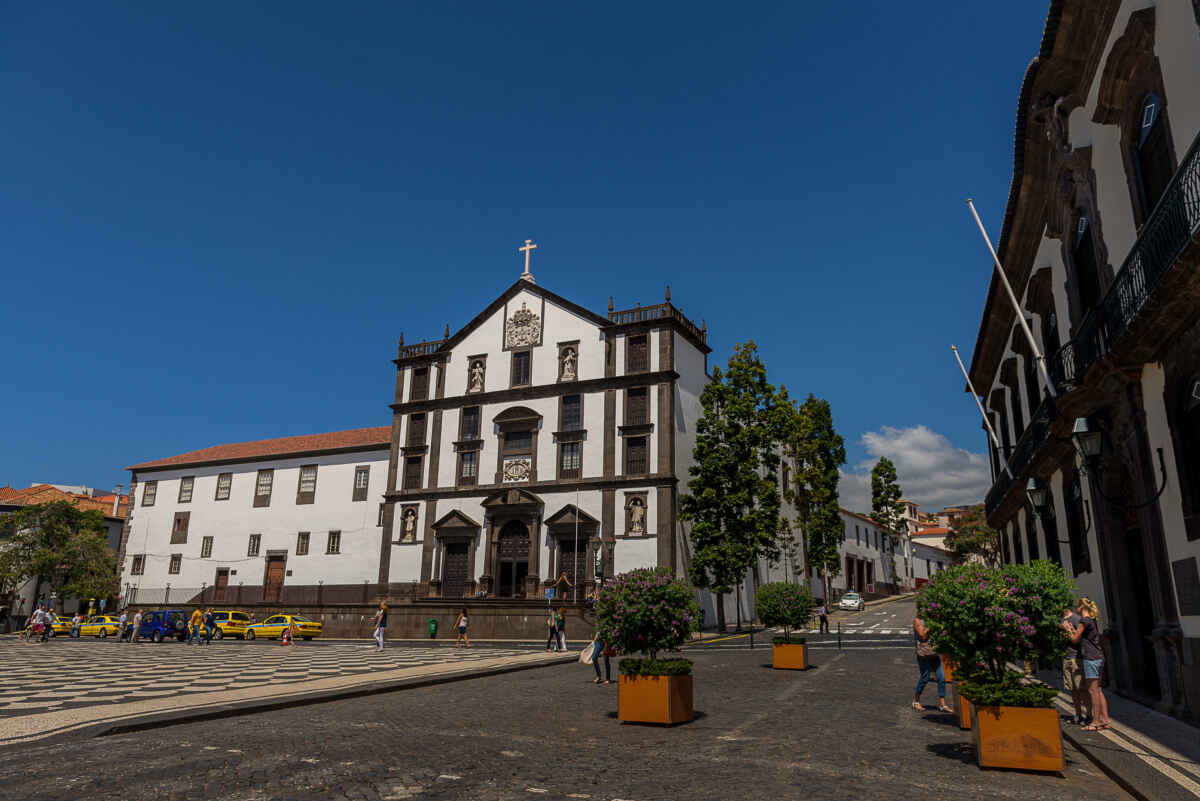
Madeira Colegio Church. Photo copyright: Francisco Correia / Visit Madeira.
The famous grapes from Madeira
Terrantez, also know as Cascal, is the sweet, fortified wine that is considered the best of all Madeiran wines. The Terrantez vineyards are limited. It is a low yielding wine. Therefore, the quantities produced are small and the prices relatively high. Terrantez can be full-bodied with a rich bouquet.
There are some 30 Madeira wine grape varieties. The most famous are – from sweetest to driest – Malvasia, Bual, Verdelho and Sercial, as well as Tinta Negra.
Malvasia, also known as Malmsey, was the first variety to be planted on the island of Madeira. It originates from Crete. It is generally an unfortified white table, dessert wine or digestive. It is made from white and black grape varieties. Malavasia is dark in color, rich in texture and offers caramel and vanilla flavors. The high sugar levels are balanced by high levels of acidity.
In England, Malmsey is associated with an anecdote regarding the death of George, Duke of Clarence, the brother of Kind Edward IV. He plotted treason against his brother and was therefore executed in 1478. Clarence was reported to have “drowned in a butt of Malmsey”.
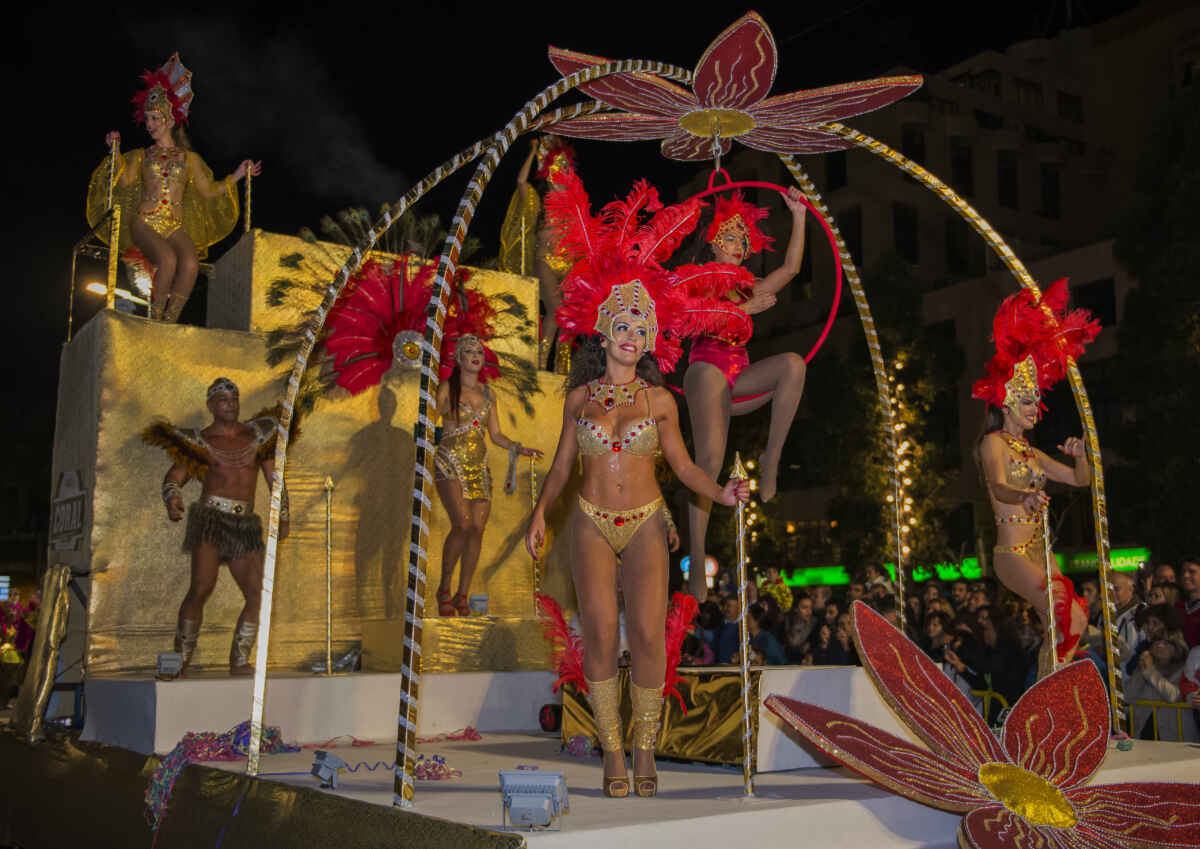
Madeira carnival. Photo copyright: Francisco Correio. When I stayed at a hotel of the Portobay Hotels & Resorts
Boal is a white wine grape originally from Continental Portugal. It is dark in color, medium-rich fortified and offers raisin flavors. It offers a fine balance between acidity and sweetness and is recommended with roast meat and desserts. Boal offers caramel and dried fruit flavors with a smoky aftertaste.
Verdelho is a white wine grape that offers high acidity levels and smoky notes. The color is golden. The older, the higher its acidity. As a young wine, it is fruity. Verdelho is drier than Bual, but not as dry as Sercial. Verdelho offers honey flavors with hints of citrus fruits. It is medium-dry or medium sweet, with a greater body than Sercial. It is served as an aperitif but also as a digestive.
Sercial is a white wine grape, a nearly fermented and completely dry wine with high acidity levels. It offers pale colors and flavors of dried fruits, oranges, spices and almonds. Sercial is an ideal aperitif.
In the 18th century, Tinta Negra was introduced on the island of Madeira. It is a red, versatile and hardy variety which produces dry, off-dry, semi-sweet and sweet wine which account to 80-85% of total production according to Vinho Madeira.
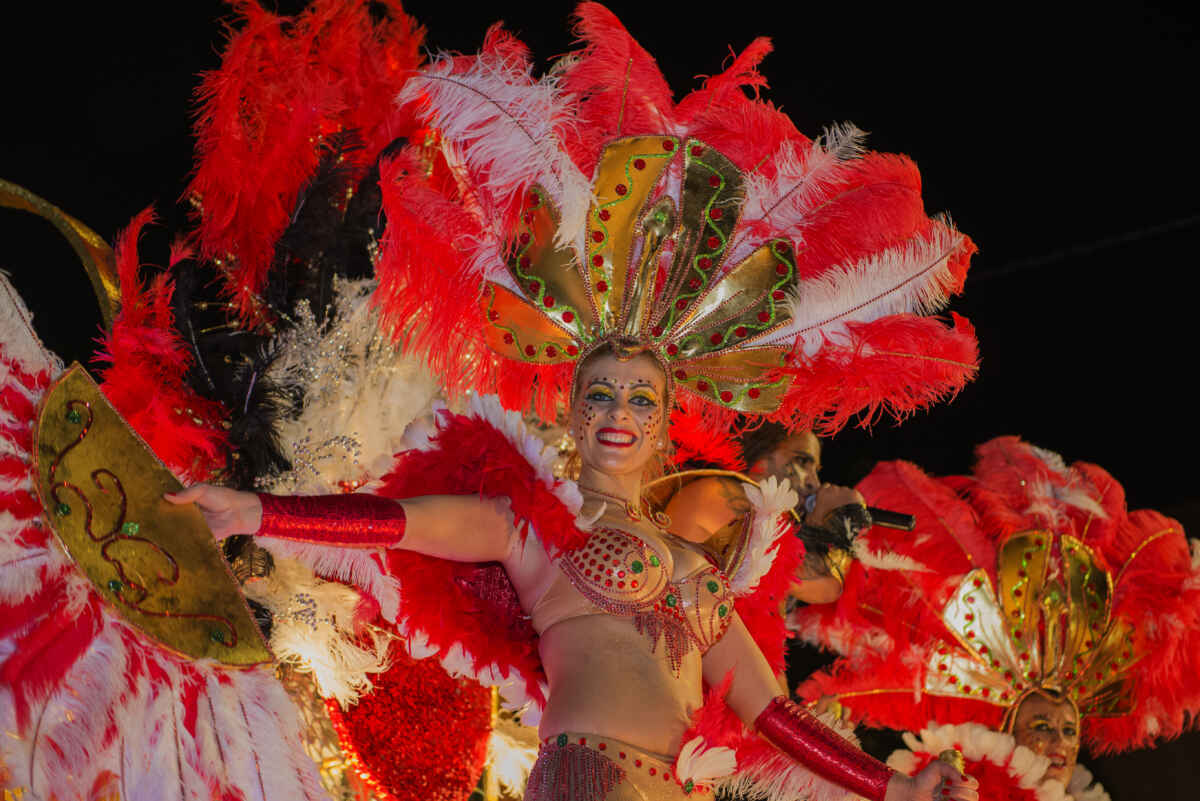
Funchal carnival dancers. Photo copyright: Francisco Correia / Visit Madeira official tourist office.
Madeira embroidery
The first creations of Madeira embroidery appeared in the 15th century. However, it was only in the second half of the 19th century that it became a notable economic factor.
At the 1850 exhibition of Madeira industries, the economic potential of Madeira Embroidery became notable. At the London Universal Exhibition the following year, Madeira Embroidery items were admired for their quality, purity and artistic perfection. In the 19th century, England and Germany were the largest export markets.
In 1852, Elizabeth Phelps, the youngest daughter of a wealthy British businessman and wine exporter, was concerned about the effects of the vine disease on the income of simple vineyard workers. She helped turn the rural pastime into an industry and a flourishing export business. She found agents in London to sell the Madeira embroidery overseas. In addition, Elizabeth Phelps founded a school were children could learn the techniques of broderie anglaise. By 1906, some 32,000 people were employed in the embroidery business on Madeira.
Also instrumental in the development of the embroidery business were the two British brothers Frank and Robert Wilkinson. They established a company exporting embroidery on a large scale to England.
Embroidery products range from sheets, towels, dresses, bride-dresses, shirts and tablecloths to handkerchiefs. However, this labor intensive art is in a difficult position today. Although still appreciated by many designers and lovers of artisan excellence, especially in the United States, England and Italy, it is not easy to find enough young people to take up embroidery on the island of Madeira. Furthermore, the mass market has been taken over by the Chinese.
In June 2006, the Wine, Embroidery and Handicraft Institute of Madeira (IVBAM) was created to coordinate, support, evaluate, preserve and promote Madeira vine, wine and handicrafts.
Nowadays, there are still some 4500 embroiderers working on the Island of Madeira. They are organized in the Embroidery Workers Union and benefit from Social Security. IVBAM controls and certifies the authenticity of all Madeira embroidery items.
The present owner of Quintinha de São João, José Barreto, was the key figure in the Madeira embroidery business. You can spot some items at his hotel.
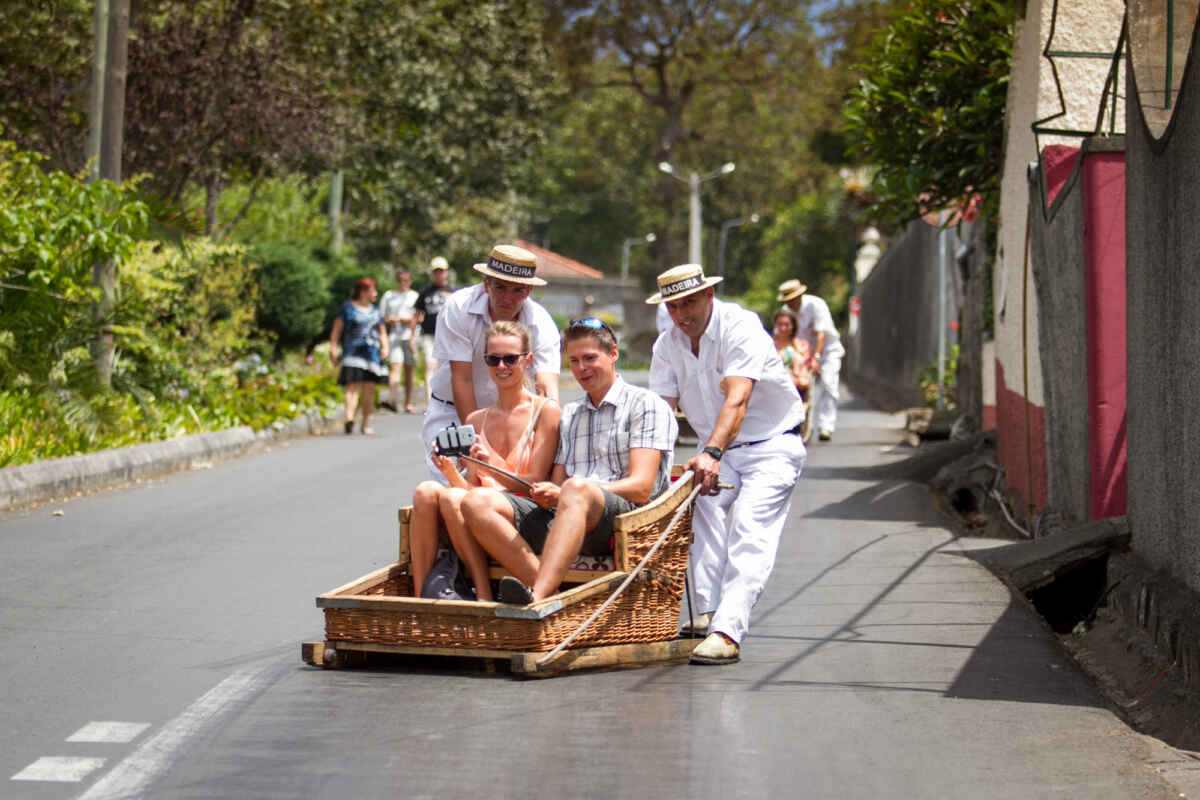
A toboggan ride is mandatory for any Funchal visitor. Photo copyrights: Miguel Moniz/Visit Madeira.
Wicker sledges aka carros de cesto or tobogganing
No travel and sightseeing guide about Madeira is complete without mentioning the wicker sledges from Monte to Funchal. When I stayed at Quinta do Monte, I went for the relatively short tourist pleasure.
The two-seater wicker sledges are made of wood and wicker and date back to around 1850, when they were first used by local merchants to get quickly from the Monte hill down to the city of Funchal.
The wicker sledge is controlled by two carreiros, who guide and control the sledge only with their heavily booted feet.
The raw material for the wicker sledge comes from a tree that normal grows beside streams on marshy land and is a cross between the white willow (Salix alba) and the crack willow (Salix fragilis).
The main production center is Camacha. Since 1850, not only wicker sledges, but of course also wicker furniture including boxes, chairs, tables and baskets have been produced in Camacha and elsewhere on the Island of Madeira.
Like drinking a glass of Madeira Wine, enjoying an afternoon tea at Reid’s Palace and buying an item of Madeira embroidery, making a wicker sledge slide from Monte down to Funchal is a must for any tourist.
Carnival and Flower Festival
Funchal is famous for its carnival with pageants, which are organized in February. The Flower Festival after Easter culminates with a flower parade accompanied by dancers. It is a celebration of spring. It is the main event for locals and tourists alike during the entire year. A few years ago, I participated in the parade as part of a group of guests and staff of the Portobay Hotels & Resorts. You just have to walk and dance some two kilometers. As someone who dances entire nights away at a crazy pace, I thought it would be a peace of cake for me. It was great fun but brutal for my legs. You have to dance on the pavement. And the parade is very slow. I danced like crazy, but it was tough.
Levadas
Levadas are the water canals that spread around the island. In total, the 50 cm deep irrigation channels cover over 2000 km, mostly sculpted by hand. They have been built to capture the rainfall and water from natural springs. Today, they are also the delight of the tourists who can discover the island on some 200 levada routes around Madeira.
Given the natural beauty of the island, a walk along a levada is another must for any visitor. You can discover the interior of the island with its breathtaking virgin scenery, mountain springs, slopes and valleys.
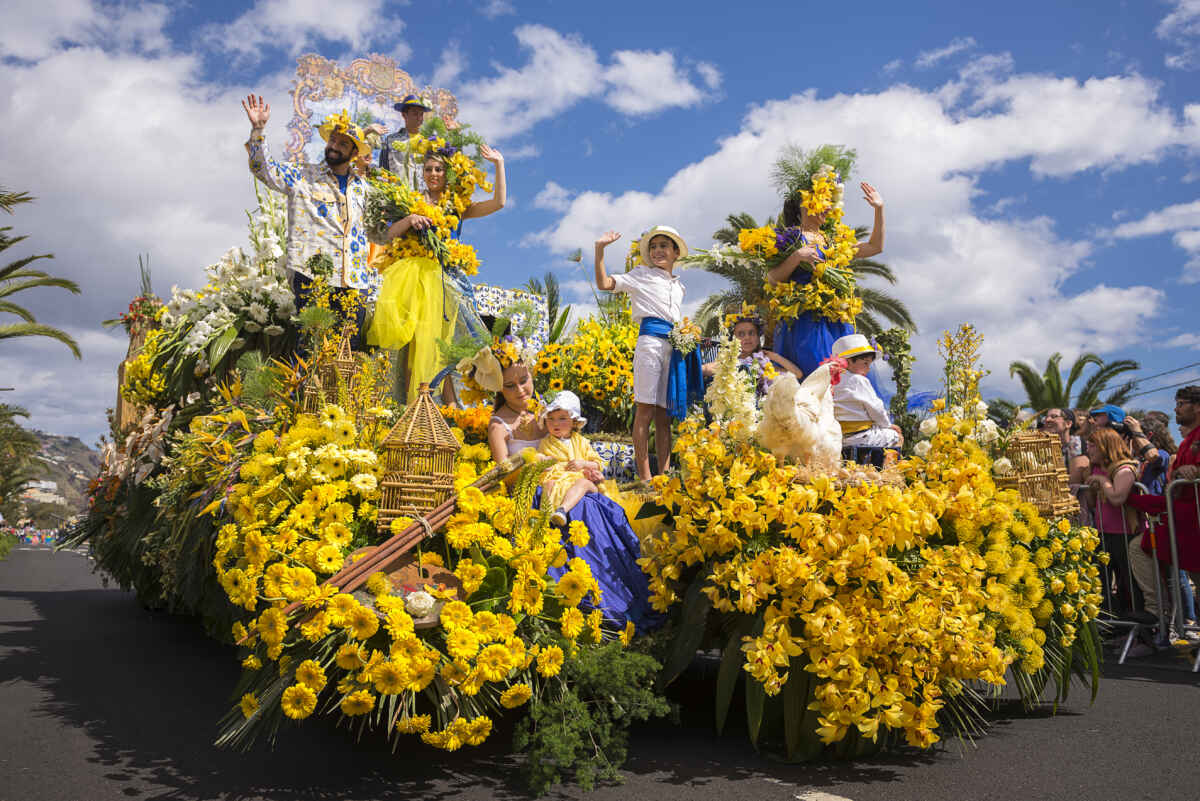
The Madeira flower show. One of the hightlights any year in Funchal. Photo copyright: Francisco Correia/Visit Madeira, the island’s official tourist agency.
Food: fish and other dishes
The Island of Madeira offers a large variety of dishes. Among the most famous is the deep sea black scabbardfish (Aphanopus carbo), which swims in depths between 180 and 1700 meters. In Madeira, the black scabbard fish is served with fried banana (Espada com banana frita), prepared with crushed garlic and lemon juice and dipped in beaten egg yolk.
You can start a lunch or dinner with a bolo do caco (sweet potato bread) with garlic butter, grilled limpets (snails) with rice or a tomato and onion soup. Beef grilled on a skewer made from a laurel stick (espetada), tuna steak (bife de atum) with fried maize (milho frito) and codfish, especially in Câmara de Lobos (e.g. at Quinta do Estreito), are other island specialties. Honey cakes, cheesecakes and fennel candy are some of the local desserts.
Among my favorite places for dinner in Funchal are Uva restaurant at the design hotel The Vine with chef Thomas Faudry, Il Gallo d’Oro at The Cliff Bay with Michelin-starred chef Benoît Sinthon as well as the new Galáxia Skyfood restaurant at the Savoy Palace with the young and great chef Francisco Silva.
If you love markets, you must visit the colorful Mercado dos Lavradores with its many flavors and aromas.
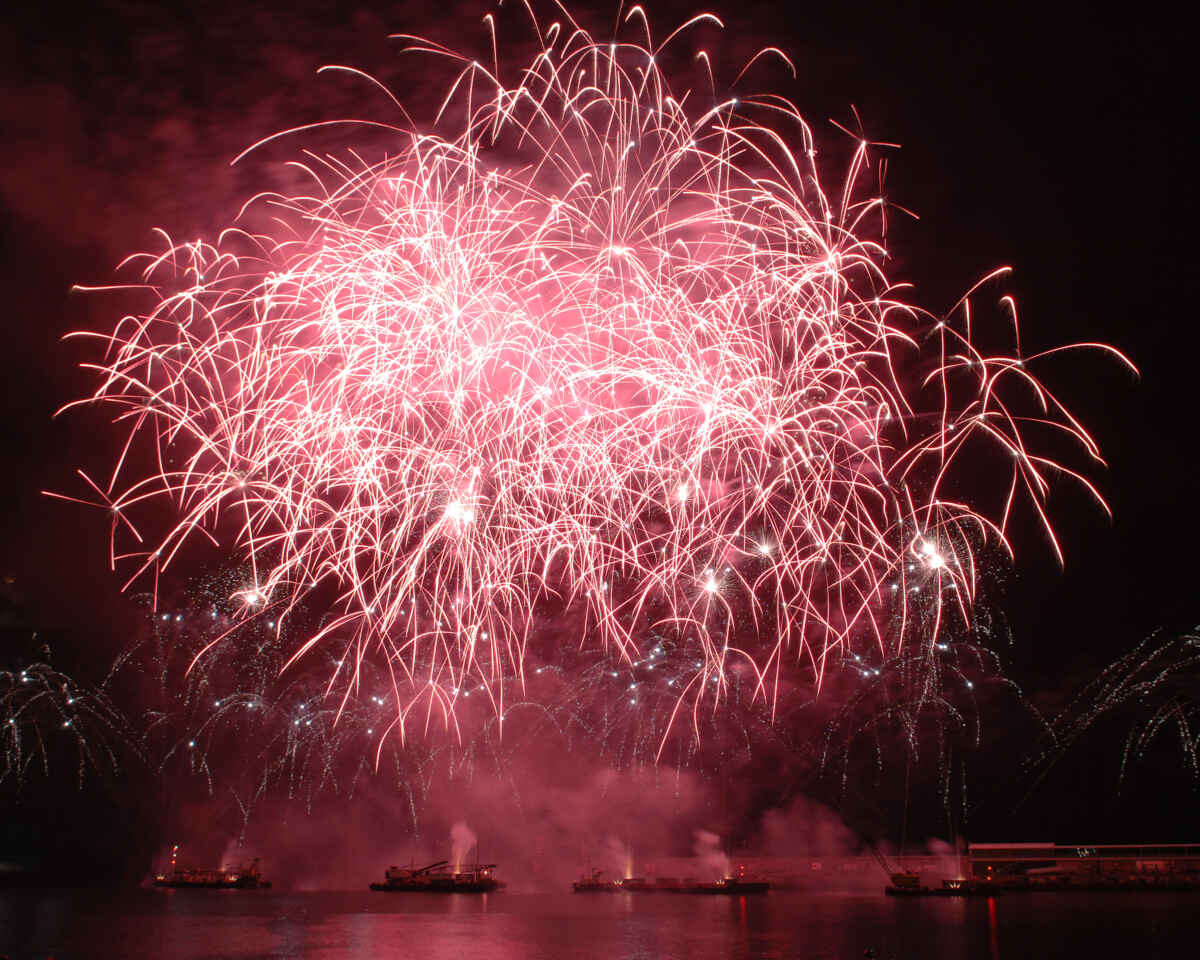
Madeira Atlantic Festival Fireworks. Photo copyright: Macedos Pirotecnica / Visit Madeira. From many hotels, you can enjoy the great event. One of the best views offers Hotel Porto Santa Maria, situated directly in the port area of Funchal.
Sports
Madeira is a great place for all kinds of sport activities, on land and on water. In addition to sport fishing and walking the levadas, you can windsurf at the picturesque beaches of Jardim and Paul do Mar, scuba dive, play golf, swim, bike and sail around the island, paraglide and ride horses. You can even swim with dolphins. Most hotels offer swimming pools, tennis courts, gyms and other sport facilities.
In Porto Moniz you can have a refreshing swim in the natural pools formed in the lava that once flowed down to the ocean.
You can also build sandcastles in Porto Santo, get tanned and enjoy Madeiran Aloe Vera oil, Winetherapy and Thalassotherapy treatments together with all kinds of massages. Porto Santo is blessed with nine kilometers of unpolluted sand beaches.

Madeira whale and dolphine watching. Photo copyright: Miguel Moniz/Visit Madeira tourist agency. With an ocean bottom more than 3,000 metres deep, the Madeira coast is the home to rich fauna ready to be discovered. Here, a boat tour is always full of surprises, with the chance to cross paths with a whale or a friendly group of dolphins.
Recommendable hotels in Funchal
Madeira enjoys a mild climate all year round. I even love Funchal in the low season in January. Last but not least, read our hotel reviews to find a recommendable accommodation in the Funchal area: the golf hotel Casa Velha, the design hotel The Vine, Pestana Carlton Madeira and Pestana Grand Hotel, Quinta da Bela Vista, Quinta da Casa Branca, Quintinha de São João, Quinta das Vistas, Quinta do Estreito, Quinta do Monte, Quinta Jardins do Lago, the grand old Reid’s Palace, the gourmet hotel The Cliff Bay, etc.
Although Fado is historically not from the Island of Madeira, but from mainland Lisbon, you can find some excellent singers and musicians in Funchal. I fondly remember performances by singers at Reid’s Palace and Quinta das Vistas a few years ago.

Stand up paddling in the Atlantic Ocean. Photos copyright: Francisco Correia / Visit Madeira. Stand Up Paddling (also known as SUP) is not just a passing trend. Originally from Hawaii and practiced with a surfboard and a paddle while standing, this sport will allow you to feel in shape while you relax your mind and admire the scenery. While focusing and balancing, enjoy the clear waters and the beauty of the coast.
All photos are the copyright of the official Madeira tourist agency Visit Madeira and their photographers Francisco Correia, Miguel Moniz as well as Macedos Pirotecnica.
Books about Madeira from Amazon.com, Amazon.co.uk, Amazon.de.
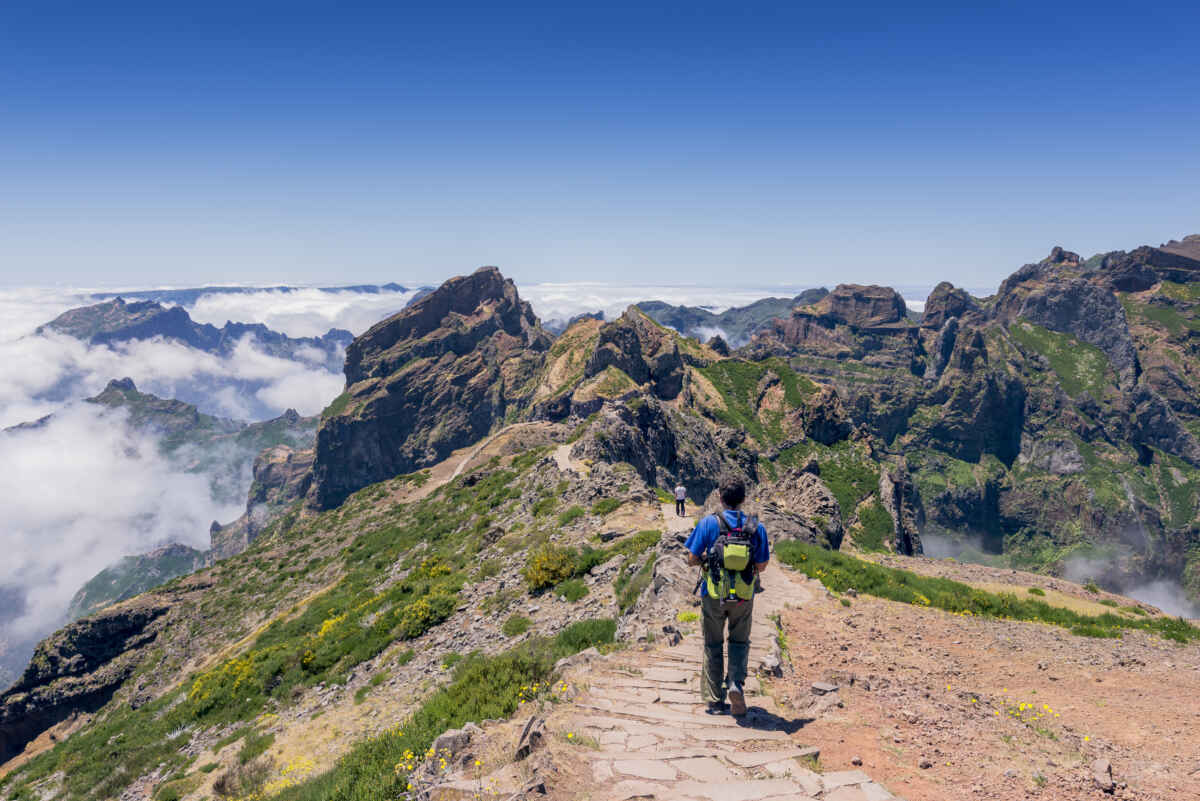
Breathtaking views from Vereda do Pico do Areeiro. Photos copyright: Francisco Correia/Visit Madeira. When you visit Madeira, you will learn that a hike is much more than a simple path. It is an intense outdoor experience, where everything is magical and fascinating.
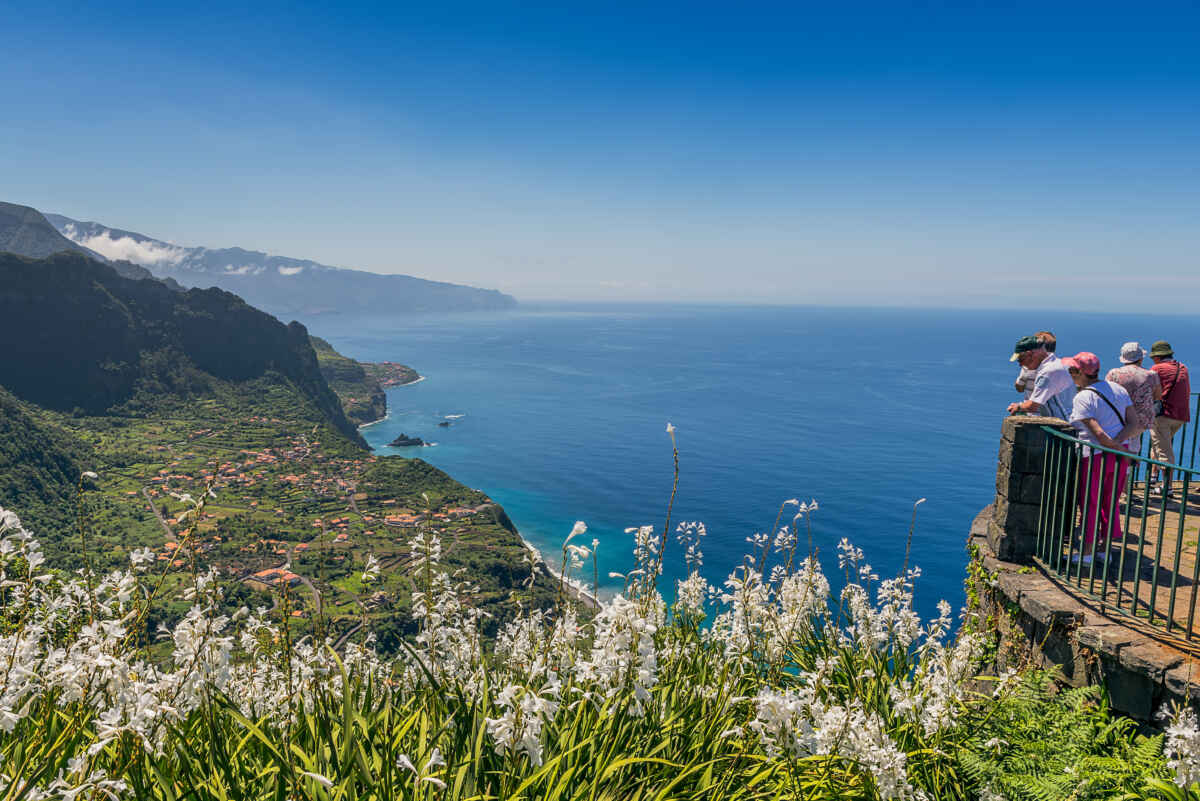
The village of Santana on the island of Madeira. Photo coypright: Francisco Correia / Visit Madeira.
Newly published article with photos and partly new information added on November 1, 2020 at 13:12 Madeira time to our newly designed pages. The history, the wine and other parts come from a seven-year old article in the old-style Cosmopolis added on November 1, 2013; additional details added on November 3, 2013 at 17:16 Warsaw time.
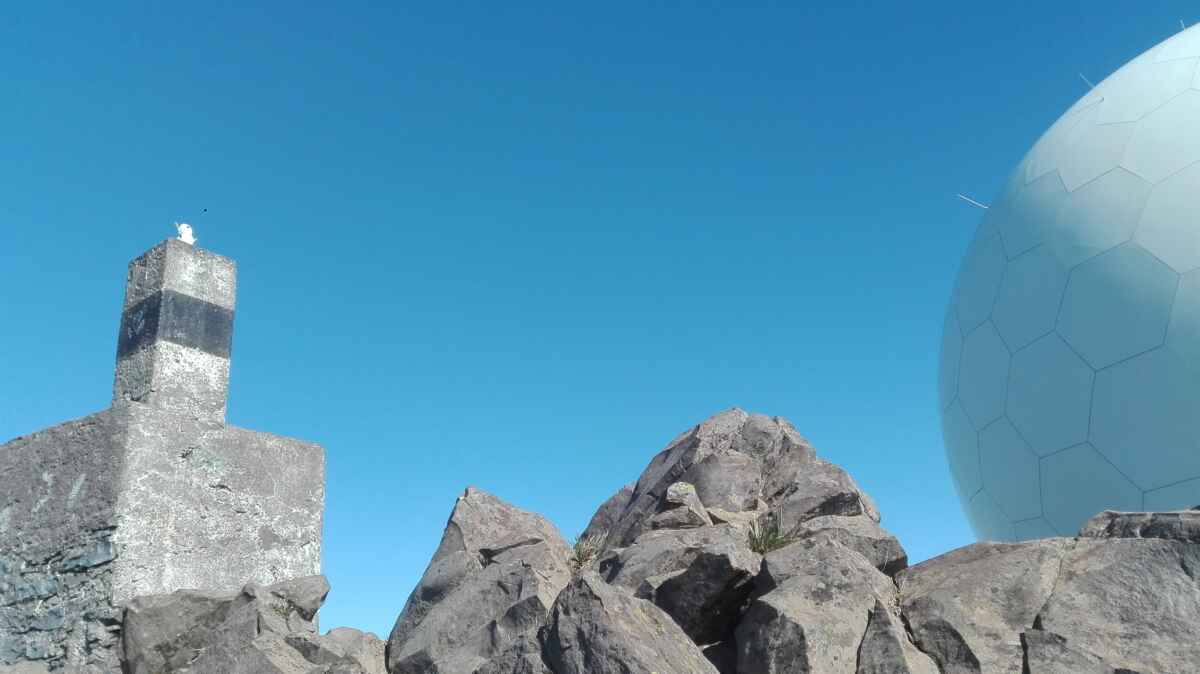
Added on December 10, 2020: A cute little snowman discovered on top of Pico do Areeiro a few days ago. Photo copyright: Rick.